Why are your employees not working to their full potential? and what you can do about it? It probably takes a wholistic approach.
Bringing our whole self to work…and all it implies.
The pandemic accelerated the transition from old-school Work Life Balance to today's Work Life Integration. It was difficult to disconnect our work life from our personal life, whether it meant the traditional in-person/onsite workplace to perform your job, or remote work.
Although the concept is not new, the pandemic was a wake-up call. We bring our whole selves to work, and our whole selves back home. Whatever happens at home follows us at work, and whatever happens at work follows us home.
Employees simply can’t check their personal life at the door. Everyday life challenges and stressors can pose barriers to employees’ well-being and distract them from focusing and even succeeding at work.
Many employees are present at work…but not accounted for. As Joe Queenan, journalist and commentator, notes: “Presenteeism is a situation that arises when distracted employees drag their forlorn carcasses into the office and waste everyone else’s time by hacking their way through their working day on an empty tank.”
In other words, employees are there physically, but they’re not there mentally. And, the impact on your business is costly, very costly.
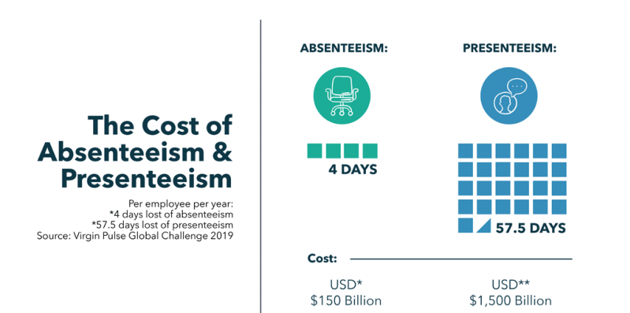
Addressing the complexity of Work-Life Integration
Addressing the complexity of Work Life Integration starts with mapping the employee journey and identifying the moments that matter – to employees (not to HR, or the CEO). This assessment includes everything at work and outside of work that positively and negatively impacts your employees’ well-being, and as a result their focus, productivity, engagement, etc.
For some organizations, the employee journey map looks like:

In other words, these organizations do not address (or even care about) their employees’ whole selves.
For other organizations, the employee journey map looks like:
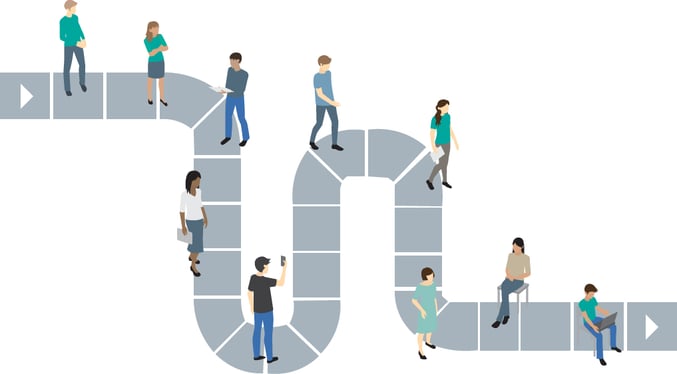
It resembles a “bored” game (literally) with a singular path and employees resemble robots.
For more “advanced” organizations, the employee journey map looks like:
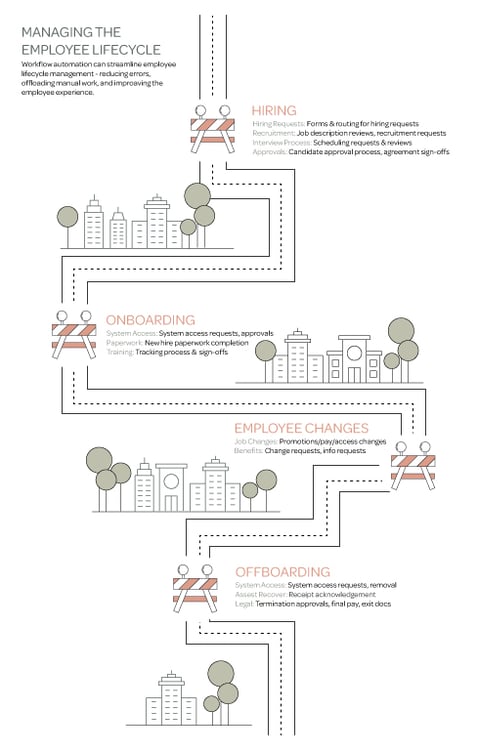
Although this type of journey map provides a more detailed approach to the employee lifecycle, it still follows a very linear path. Unfortunately, each employee’s journey is unique, and non-linear.
For the most successful organizations, they have embraced a people-centric approach, have applied design thinking to solve for it, and have a well-defined employee experience (EX) strategy. For these organizations, the employee journey looks like:
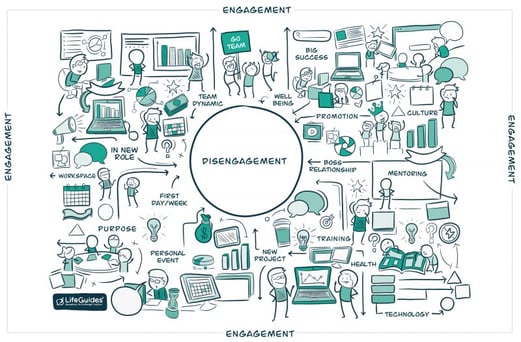
Life and work challenges are simply inevitable
Life is messy, confusing, overwhelming. Life can also be fulfilling and rich with positive experiences.
Lines between work life and personal life are typically blurred.
There are many distractions at home and at work preventing employees to be fully focused on work and productive. The distractions include: the employee's health or the health of a loved-one; work stress or burn-out; difficult relationships with co-workers or a manager; a feeling of not being valued; life's events and transitions (a new parent, an empty nester, going through breakup or divorce, losing a loved-one). These life and work events positively (or negatively) impact your employees’ vitality, focus, productivity, and performance. Any array of events and challenges in our home lives and work lives are simply inevitable.
Conscious leaders and organizations understand. They have a people-first mentality; employees and their whole selves come first. However, leaders don’t always have the answers, the tools, nor the time to support their people. When they see employees struggling, they can feel helpless and don’t know where to turn. They know their people have potential, and want to support their growth.
People leaders can control only so much. They believe by investing in solutions to support their employees’ whole selves and their aspirations for growth, companies are investing in the success of their employees, as well as their own future as leaders and the organization's future profits.
LifeGuides can help! Reach out for a Demo.
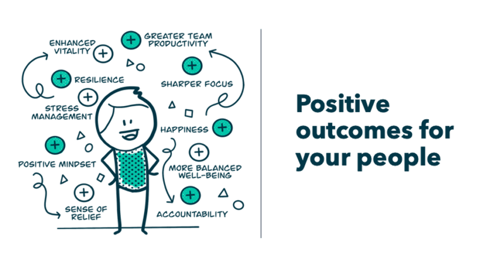
By Stephan Vincent, Sr. Director of Workplace Experience, LifeGuides
Building amazing company cultures centered around purpose, people-first mindset, human experience, and ❤️ for one another to optimize team performance
Let's Connect on LinkedIn!



